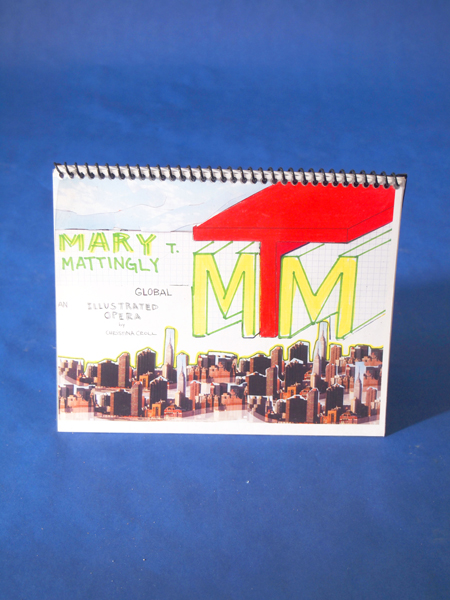![]() body | color | collections | commodity | cube | document | fabric | fetish | gender | glass | home | identity | living | machine | metal | minimal | mobility | narrative | olfactory | organic |
body | color | collections | commodity | cube | document | fabric | fetish | gender | glass | home | identity | living | machine | metal | minimal | mobility | narrative | olfactory | organic |
![]() pain | paper | plastic | plugs | power | protective | rectangular | ritual | round | sound | souvenir | spiritual | style | text-based | time | tool | touch | uniform | value | visual | warm | wood
pain | paper | plastic | plugs | power | protective | rectangular | ritual | round | sound | souvenir | spiritual | style | text-based | time | tool | touch | uniform | value | visual | warm | wood
| Paper: Comic Book by Christina Croll | |||
Narrative: Comic Book by Christina Croll. Paper, markers, collaged photographs printed at Stuyvesant High School by Christina Croll, a student and artist. Christina created this book for school aftter working with me on a rock opera I did for White Box Gallery in New York City. Printed at FedEx/Kinkos on 24th Street and 7th Avenue. I acquired this book from Christina Croll in January 2007. Christina had been working with me on the project, building stage sets, wearable sculptures and weapons for the opera. She used this comic to complete part of her assignment for Stuyvesant High School. Acetate is derived from cellulose by deconstructing wood pulp with dissolving pulps into a purified fluffy white cellulose. The cellulose is then reacted with acetic acid and acetic anhydride with sulfuric acid. Then it is then put through partial hydrolysis to remove the sulfate and a sufficient number of acetate groups to give the product the desired properties. The most common form of cellulose acetate fiber has an acetate group on approximately two of every three hydroxyls. This is known as "acetate". After it is formed, cellulose acetate is dissolved in acetone into a viscous resin for extrusion through spinnerets. As the filaments emerge, the solvent is evaporated in warm air via dry spinning, producing fine cellulose acetate fibers. The paper was made from pulp obtained by chemical means, known as kraft pulping. Chips of wood were placed in a large, sealed container known as a digester. The digester contained a strongly alkaline solution of sodium hydroxide and sodium sulfide. Bleaching removes lignin and involves mixing the pulp with a series of oxidizing chemicals that react with the lignin. After each mixture, the pulp was washed with an alkaline solution that removes the treated lignin. Fillers were added to the pulp. Pulp was added to water to form slurry in order to make paper with an even density. The marker bodies, caps, and plugs are formed from plastic resin. The marker reservoirs are formed from polyester. Powder and water are used to form the felt writing tip. In addition, felt-tipped pens require ink, and the pigments and synthetic substances used to make it. Toluol and xylol are synthetics used as solvents in dye as well as chemicals such as cyclic alkylene carbonates. Conventional additives, such as nonylphenylpolyglycol ether, alkylpoly-glycol ether, fatty acid polyglycol ester, or fatty alcohol ethoxalates, and preservatives, such as ortho-phenolphenyl and its sodium salt, ortho-hydroxydiphenyl, or 6-acetoxy-2,4-dimethhyl-m-dioxane, may also be added to the mixture. To make the body of the marker, plastic resin is injection-molded into a pen's body. Pen caps and plugs are formed in the same manner as the barrel. The nib, or tip, of the marker is made from powder mixed with water, molded, and baked into its pointed or flat form. |
 |
||
![]()
